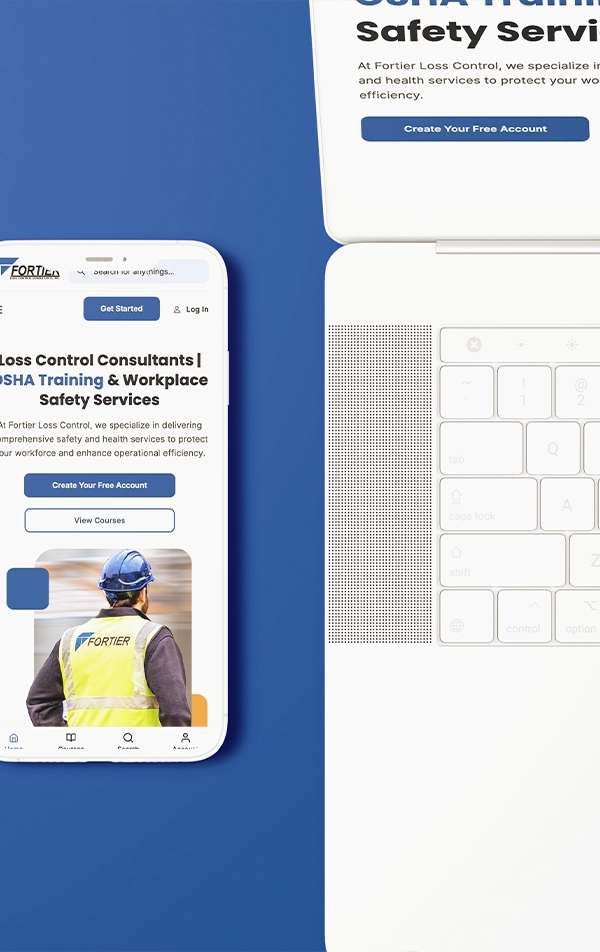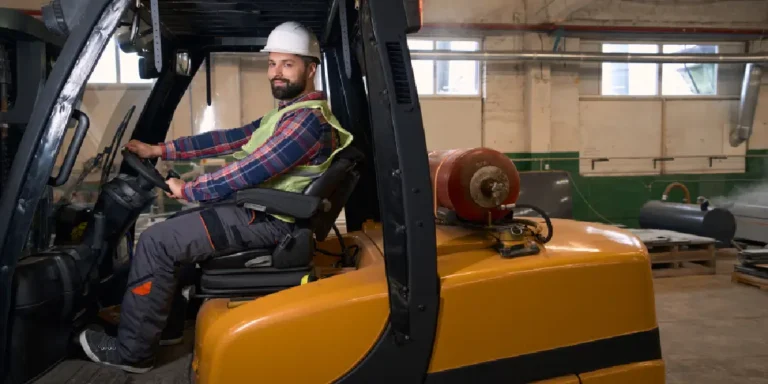Introduction: The Crucial Role of Flagging in Nashville’s Growth
Nashville, Tennessee, thrives as a nexus of urban expansion and cultural vibrancy, its skyline perpetually punctuated by cranes and its streets alive with the hum of progress. With its burgeoning infrastructure projects—spanning residential developments, commercial complexes, and highway expansions—and a relentless population growth that has seen the metropolitan area swell past two million residents, the city faces an escalating demand for robust safety measures on its roadways.
This demand is not a mere logistical footnote; it is a critical imperative as Nashville balances its ambition with the well-being of its citizens. Flagging emerges as an indispensable practice, orchestrating the harmonious coexistence of construction crews wielding heavy equipment, motorists navigating daily commutes, and pedestrians traversing bustling sidewalks. Amid this dynamic and ever-evolving landscape, Fortier Loss Control stands as a vanguard, its presence a reassuring constant in the flux of urban development. The firm ensures that safety is not relegated to an afterthought but is elevated to a foundational pillar of Nashville’s progress, safeguarding the arteries of a city on the rise.
Understanding Flagging: A Pivotal Safety Mechanism
Flagging, at its essence, is the art and science of directing traffic through or around work zones with a precision that borders on choreography and an authority that commands respect. Far from the reductive image of a lone figure waving a paddle, it embodies a sophisticated system of communication designed to mitigate chaos in environments where risk lurks at every turn.
Certified flaggers, trained to an exacting standard, employ a lexicon of standardized signals—crisp hand gestures, deliberate paddle movements, and occasionally vocal cues—coupled with strategic positioning that accounts for sightlines and traffic flow. Their mission is clear: guide vehicles safely through labyrinthine detours or temporary closures, averting collisions that could cascade into disaster and safeguarding lives that hang in the balance.
This mechanism assumes paramount importance in construction zones, where the interplay of towering cranes, rumbling bulldozers, and human activity amplifies the potential for calamity. Here, flagging transcends mere traffic control; it becomes a bulwark against entropy, ensuring that the cacophony of progress does not devolve into tragedy.
Nashville’s Unique Roadway Challenges
The Music City’s roadways present a tapestry of complexities, woven from the threads of its vibrant urban life and relentless expansion. From the congested arteries of downtown Broadway, where neon signs cast their glow over throngs of tourists and delivery vans jostle for space, to the sprawling interstate corridors of I-40 and I-65, which pulse with the steady rhythm of commuter traffic, Nashville contends with a density that tests the limits of its infrastructure.
These thoroughfares, vital to the city’s heartbeat, are further strained by an influx of visitors drawn to its cultural allure—be it the Grand Ole Opry or the honky-tonk serenades echoing through the night. Narrow streets in historic districts like The Gulch or 12 South, relics of a bygone era, constrict modern traffic flows, their charm a double-edged sword that complicates navigation. Ongoing highway expansions, such as those along I-24 or the perennial widening of I-440, introduce a shifting mosaic of construction zones, each demanding meticulous traffic management to prevent gridlock or peril.
Seasonal weather variations amplify these challenges: torrential rains transform asphalt into reflective slicks, obscuring lane lines and reducing visibility to a perilous blur, while rare but treacherous icy spells coat surfaces with an unforgiving sheen. Together, these elements underscore the necessity for adaptive flagging strategies, bespoke solutions tailored to the idiosyncratic needs of a city that refuses to stand still. Without such vigilance, Nashville’s roadways risk becoming bottlenecks of chaos rather than conduits of progress.
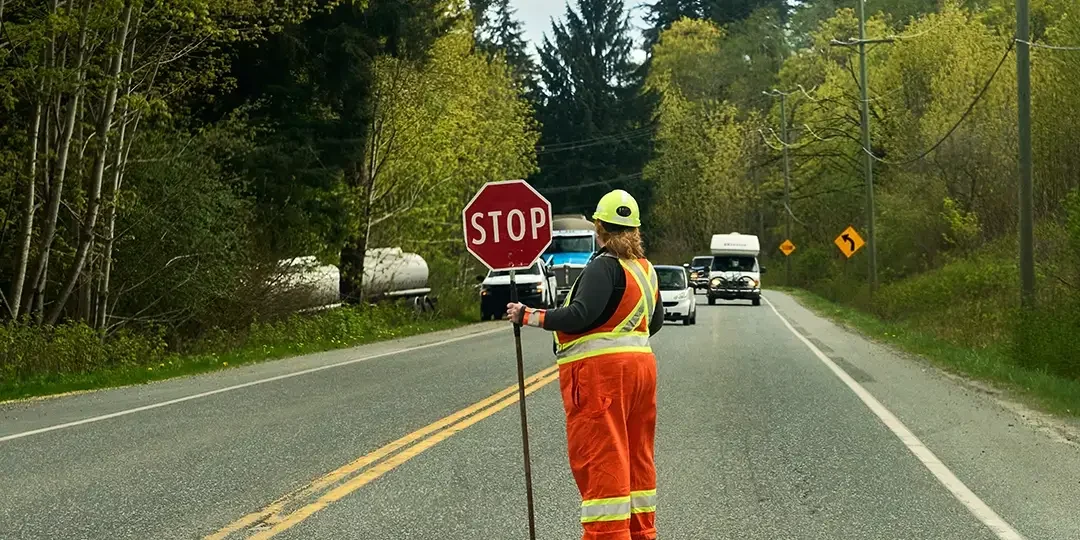
Fortier Loss Control: Pioneers in Safety Excellence
Fortier Loss Control emerges as a luminary in the realm of workplace and roadway safety, its headquarters rooted in Nashville’s soil with a resolute mission to elevate industry standards to new zeniths. This is no small ambition in a city where growth often races ahead of precaution, yet Fortier meets the challenge with a comprehensive approach that sets it apart. The firm seamlessly integrates expert flagging services with a broader expertise in risk mitigation, crafting a holistic safety net that spans a spectrum of sectors—from the dust and clamor of construction sites to the polished corridors of hospitality venues and the intricate operations of public utilities.
Its cadre of professionals, a seasoned collective of strategists and field operatives, brings a wealth of experience that informs every facet of its work. Each project under Fortier’s purview adheres to stringent safety protocols, a non-negotiable baseline that ensures compliance with regulatory demands while preserving operational efficiency. This dual focus—safety without sacrifice to productivity—stands as a testament to the firm’s pioneering ethos in loss prevention.
In an industry where shortcuts can tempt, Fortier charts a different course, one where excellence is not an aspiration but a daily practice, illuminating the path for others to follow in safeguarding Nashville’s bustling landscape.
Certified Flaggers: The Backbone of Effective Traffic Management
At the heart of Fortier’s operations are its certified flaggers, a cohort of meticulously trained professionals who execute their duties with an unwavering competence that borders on artistry. These individuals are not mere placeholders in reflective vests; they are the backbone of effective traffic management, forged through a rigorous instructional gauntlet that leaves no room for mediocrity. Their training encompasses the full spectrum of traffic control techniques—mastering the crisp, unambiguous language of signal communication, from the authoritative sweep of a paddle to the subtle tilt of a hand, while honing a situational awareness that anticipates the unexpected.
A sudden swerve from an inattentive driver, the rumble of an approaching semi-truck, the shuffle of pedestrians veering off course—all fall within their vigilant gaze. On Nashville’s worksites, their presence transforms potential disorder into a controlled environment, where the flow of vehicles aligns seamlessly with construction timelines, a ballet of precision amid the din of progress.
Fortier’s emphasis on certification is not a perfunctory nod to standards; it is a deliberate commitment to deploying only the most qualified personnel, those whose expertise stands as a bulwark against the hazards that threaten workers and the public alike. In their hands, flagging becomes more than a task—it becomes a lifeline, ensuring that Nashville’s growth unfolds without the shadow of preventable tragedy.
Tailored Traffic Solutions for Nashville’s Diverse Worksites
No two worksites in Nashville are identical, a reality that Fortier Loss Control embraces with an almost artisanal dedication to crafting bespoke traffic management plans. The city’s landscape is a patchwork of contrasts—towering cranes loom over downtown’s frenetic core, while suburban sprawl unfurls along quieter, tree-lined arteries.
Recognizing this diversity, Fortier approaches each project with exhaustive site evaluations, a process akin to cartography for safety. Traffic density is measured with precision: the relentless ebb and flow of rush-hour commuters on I-65 juxtaposed against the sporadic bursts of activity near a residential cul-de-sac. Worksite layouts are scrutinized—every angle, every obstruction mapped—revealing potential hazards like blind corners obscured by historic facades in East Nashville or pedestrian thoroughfares threading through the bustle of Green Hills. Short-term lane closures, perhaps for a utility repair near Music Row, receive the same meticulous attention as multi-phase highway projects stretching across months, such as the reconstruction of bridges along I-440. Flagging strategies are calibrated with surgical care, ensuring minimal disruption to the city’s rhythm—cones placed just so, flaggers positioned to guide with clarity, detours plotted to preserve flow.
This bespoke methodology is no mere luxury; it is a necessity, ensuring that safety and efficiency coexist in a delicate balance. Whether in the dense urban grid or the sprawling suburban fringe, Fortier’s tailored solutions address the variegated demands of Nashville’s worksites, transforming potential chaos into orchestrated order.

Compliance and Beyond: Navigating Regulatory Labyrinths
Navigating the labyrinthine web of safety regulations is a formidable task for Nashville businesses, a challenge compounded by the overlapping oversight of entities like the Occupational Safety and Health Administration (OSHA), the Tennessee Department of Labor and Workforce Development, and local municipal codes. The rules are intricate, their enforcement unyielding—mandates dictating flagger attire, signage specifications, and work zone boundaries form a dense thicket of requirements that can ensnare the unprepared. Fortier Loss Control excels in this arena, wielding unparalleled expertise in regulatory compliance as both shield and sword. Its flagging services are engineered to not only meet but exceed these mandated standards, with every detail—from the reflective sheen of a flagger’s vest to the spacing of warning barrels—aligned with legal precision. Yet Fortier goes further, incorporating proactive measures that anticipate the shifting tides of regulatory evolution: updated training modules to reflect the latest Manual on Uniform Traffic Control Devices (MUTCD) amendments, or contingency plans for OSHA’s heightened focus on temporary traffic control. This foresight alleviates the burden of legal complexities, a weight that might otherwise bog down project timelines or budgets. By shouldering this responsibility, Fortier empowers clients to focus on their core operations—laying asphalt, erecting steel, powering the city—secure in the knowledge that their adherence to the highest safety benchmarks is unassailable. In a landscape where compliance is non-negotiable, Fortier turns obligation into opportunity.
Technology’s Role in Enhancing Flagging Precision
In an era of technological ascendancy, where innovation reshapes industries with relentless momentum, Fortier Loss Control harnesses cutting-edge tools to augment its flagging precision, marrying human skill with mechanical ingenuity. Automated Flagger Assistance Devices (AFADs) stand as a cornerstone of this approach, extending the reach of human flaggers with mechanical arms that signal traffic from safer, more distant vantage points—reducing exposure to the roar of oncoming vehicles while maintaining control. These devices, deployed on sites from downtown’s narrow alleys to the wide berths of interstate shoulders, amplify efficiency without sacrificing accuracy. Complementing this are real-time traffic monitoring systems, networks of sensors and cameras that feed data-driven insights into Fortier’s command. A sudden snarl on I-24? Flaggers adjust their cadence instantly, informed by live updates.
A lull in midday flow? Resources shift seamlessly to optimize coverage. This technological synergy—where algorithms inform instinct—elevates the responsiveness of Fortier’s safety interventions, ensuring that plans flex with the unpredictable pulse of Nashville’s roads. Drones, too, play a role, soaring above worksites to provide aerial reconnaissance, their footage refining flagger placement and barricade alignment.The result is a paradigm shift in roadway protection: a fusion of human expertise and digital precision that sets Fortier apart as a trailblazer, its flagging operations not just reactive but prescient, safeguarding lives with a clarity that technology alone could never achieve.
Community Impact: Fostering a Culture of Safety Awareness
Fortier Loss Control’s influence stretches far beyond the orange cones and barricades that define its worksites, seeding a culture of safety awareness that permeates Nashville’s civic consciousness with quiet but undeniable force. This is no incidental byproduct of its operations; it is a deliberate mission, pursued through a multifaceted tapestry of engagement that binds the firm to the city it serves.
Partnerships with trade associations—such as the Tennessee Road Builders Association—forge conduits for sharing best practices, where Fortier’s expertise in flagging and risk management becomes a resource for industry peers. Safety workshops for local contractors, held in community centers or on-site trailers, distill complex protocols into actionable insights, equipping workers with the tools to spot hazards before they metastasize into harm: a frayed cable, an unsteady scaffold, a motorist veering too close. Outreach extends to schools near high-traffic zones—think the bustling corridors near Hillsboro High or the pedestrian-heavy paths of East Nashville—where students and parents learn the language of flaggers’ signals, transforming a raised paddle into a symbol of caution they instinctively heed.
This dissemination of knowledge empowers at every level: workers sharpen their vigilance, drivers attune their reflexes to the choreography of traffic control, and communities embrace safety as a collective responsibility rather than a top-down edict. The ripple effect is subtle yet profound, a slow bloom of awareness that reshapes behavior block by block. In this way, Fortier reinforces Nashville’s identity as a city that marries its relentless progress with a tempered prudence, its growth not a reckless sprint but a measured stride, underpinned by a shared commitment to protecting its people from the perils that lurk amid expansion.
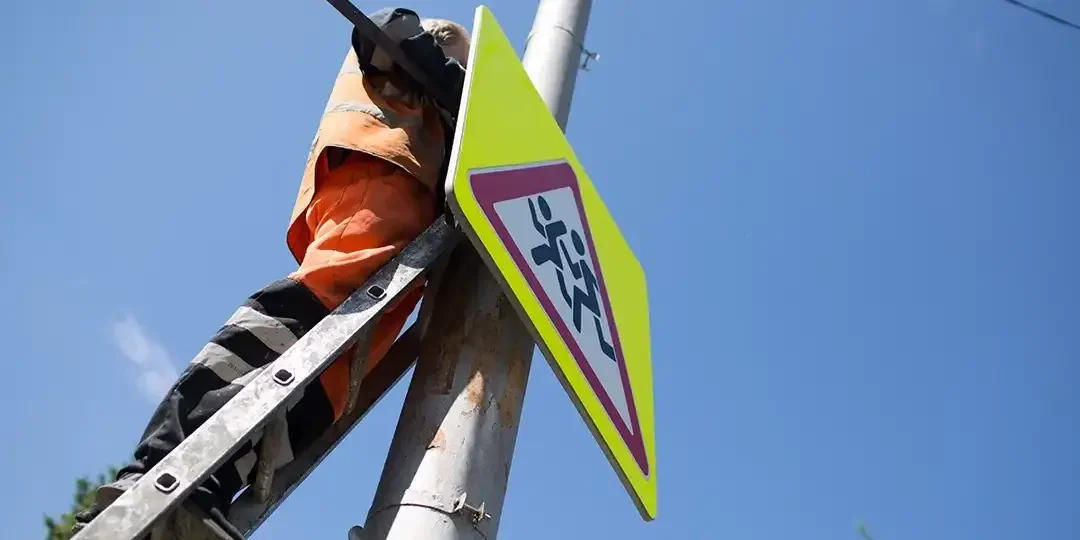
Frequently Asked Questions
1. What makes flagging safety so critical to Nashville’s roadways, and how does Fortier Loss Control address this need?
Answer: Nashville’s roadways are a complex network strained by rapid urban growth, dense commuter traffic, and a steady influx of tourists, all compounded by construction projects and unpredictable weather patterns such as heavy rains or icy conditions.
Flagging safety is critical because it orchestrates the safe movement of vehicles and pedestrians around work zones, preventing collisions and ensuring the protection of construction crews amid these dynamic challenges. Fortier Loss Control addresses this need with a comprehensive approach, deploying certified flaggers trained in precise traffic control techniques and situational awareness. The firm conducts exhaustive site evaluations to craft tailored traffic management plans, ensuring that each worksite—whether a busy downtown intersection or a sprawling highway expansion—receives strategies that minimize disruption while maximizing safety. By integrating expertise with proactive measures, Fortier transforms Nashville’s roadways into secure pathways for progress.
2. How does Fortier Loss Control ensure its flagging services comply with safety regulations in Nashville?
Answer: Compliance with safety regulations in Nashville involves navigating a multifaceted framework, including federal standards from OSHA, state guidelines from the Tennessee Department of Labor, and local ordinances specific to the city’s infrastructure. Fortier Loss Control excels by embedding regulatory adherence into every facet of its flagging operations. Its services meet mandated requirements—such as proper signage, flagger visibility, and work zone delineation—while going beyond with forward-thinking practices like redundant communication systems and updated training aligned with the latest Manual on Uniform Traffic Control Devices (MUTCD) revisions. This expertise ensures that clients not only satisfy legal obligations but also benefit from enhanced safety measures that anticipate evolving standards, allowing businesses to focus on their operations with confidence in their compliance and protection.
3. What role does technology play in Fortier Loss Control’s flagging safety efforts in Nashville?
Answer: Technology plays a pivotal role in enhancing the precision and responsiveness of Fortier Loss Control’s flagging safety efforts across Nashville’s diverse worksites. The firm employs Automated Flagger Assistance Devices (AFADs) to extend the reach of human flaggers, enabling remote traffic control from safer positions and reducing their exposure to high-speed traffic. Real-time traffic monitoring systems, utilizing sensors and cameras, provide data-driven insights that allow for dynamic adjustments to flagging plans—adapting instantly to congestion spikes or unexpected lulls. Additionally, drones offer aerial perspectives, refining flagger placement and barricade configurations with unmatched accuracy. This synergy of cutting-edge tools and human expertise elevates Fortier’s ability to protect workers and roadways, ensuring that safety interventions keep pace with Nashville’s fast-evolving urban landscape and its unique traffic demands.
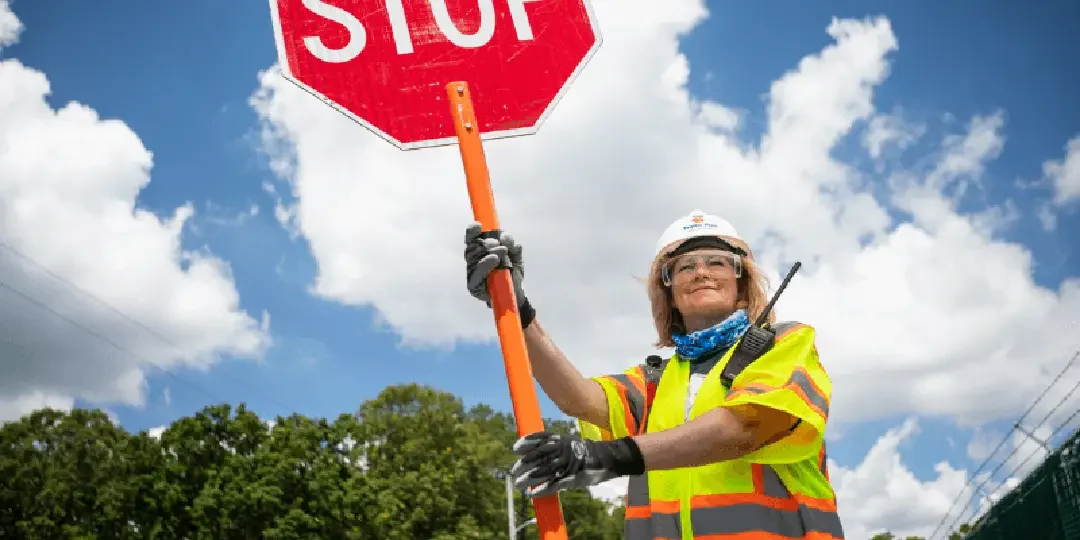
Conclusion: Safeguarding Nashville’s Roadways for Tomorrow
As Nashville strides toward an ever-brighter future, its skyline piercing the horizon with ambition and its streets thrumming with the pulse of a million lives, flagging remains a linchpin in its ascent—a practice that Fortier Loss Control elevates to an art form through diligence and ingenuity. The firm’s certified flaggers, trained to a razor’s edge of competence, stand as sentinels at the intersection of chaos and order, their signals a lifeline in the tumult of construction zones.
Tailored strategies, meticulously sculpted to fit the contours of each worksite—be it a downtown lane closure or a sprawling interstate detour—ensure that safety and efficiency dance in lockstep, never one at the expense of the other. A fusion of technology and expertise propels this effort forward: Automated Flagger Assistance Devices hum alongside human precision, while real-time data streams refine plans with a clarity that anticipates rather than reacts. Together, these elements fortify Nashville’s worksites and roadways against the perils of unchecked expansion, a quiet triumph woven into the fabric of daily life. Fortier’s work is not loud—it lacks the fanfare of ribbon-cuttings or the glare of spotlights—but it is a steadfast act of vigilance, ensuring that the city’s streets remain conduits of opportunity rather than corridors of risk.
In Fortier’s capable hands, safety is not merely preserved as a static ideal; it is reimagined, a dynamic force that adapts to Nashville’s ceaseless evolution. This is the firm’s legacy: a promise of protection etched into the asphalt and the ethos of a thriving metropolis, securing a foundation for the generations who will inherit its promise and its perils alike.


